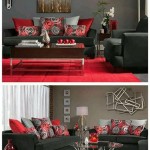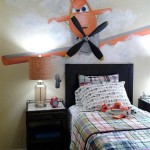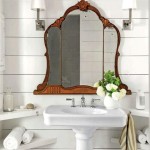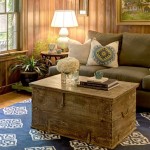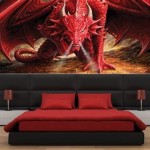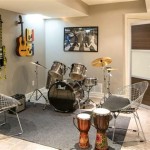How To Decorate a Hall Without Balloons or Flowers
Decorating a hall for an event requires careful consideration of the space, the event's purpose, and the desired atmosphere. While balloons and flowers are traditional choices, there are numerous alternative methods to create a visually appealing and memorable setting. This article outlines several effective strategies for decorating a hall without relying on these common elements.
Strategic Use of Lighting
Lighting is a foundational element in creating ambiance and directing focus within a hall. It is possible to transform the feel of a room dramatically with the correct lighting techniques. Rather than relying on overhead fluorescent fixtures, incorporate a variety of lighting sources to add dimension and warmth.
Uplighting provides a subtle yet impactful way to wash walls with color. Affixing LED uplights at the base of walls, angled upwards, casts a soft glow that can be customized to match event themes. These lights are energy-efficient and available in a wide spectrum of colors, including customizable RGB options.
String lights, especially fairy lights or bistro lights, offer a more whimsical and inviting atmosphere. Drapery string lights along the ceiling, around pillars, or across walls creates a canopy of soft light. For a more refined look, consider using globe string lights, which provide a brighter, more even illumination.
Projector lights can also be beneficial. Gobo projectors, for instance, project patterns, logos, or images onto walls or floors. This is particularly useful for corporate events or celebrations with a specific theme. The patterns can be customized to reflect the brand or occasion.
Candles, both real and artificial, can add a touch of elegance and intimacy (ensuring all safety regulations are followed and using flameless options in areas where open flames are prohibited). Group candles of varying heights on tables or along walkways for a visually appealing centerpiece. Consider utilizing mirrored surfaces underneath candle arrangements to amplify the light.
Consider integrating the lighting scheme to fit the event's progression. Warmer colors (yellow, orange) can foster a sense of intimacy for dining, while cooler colors (blue, green) can create a more energetic atmosphere for dancing or presentations. Dimmable lighting systems allow for seamless transitions between different moods.
Incorporating Fabric and Textiles
Fabric and textiles offer a versatile means of adding texture, color, and visual interest to a hall. Draping fabrics strategically can soften harsh lines, create visual focal points, and transform the overall aesthetic.
Consider using fabric backdrops behind stages or along walls. Materials like chiffon, velvet, or satin can add a touch of luxury. Draping techniques can range from simple straight lines to more elaborate swags and folds. The choice of fabric should complement the event's theme and color palette.
Table linens are another excellent opportunity to introduce color and texture. Opt for high-quality linens that complement the overall décor. Table runners, overlays, and napkins can be strategically chosen to add visual interest and layering to the table setting.
Pipe and drape systems provide a modular and customizable way to create walls, partitions, or backdrops. These systems consist of adjustable uprights, crossbars, and fabric panels. Pipe and drape can be used to conceal undesirable areas, create breakout spaces, or simply add visual interest to the hall. The fabrics can be easily changed to match different event themes.
Consider using textured fabrics to add depth and visual appeal. Sequin fabrics, for example, can create a glamorous and eye-catching effect. Corduroy or velvet fabrics can add a touch of warmth and sophistication. The choice of texture should be balanced with the overall aesthetic to avoid overwhelming the space.
Fabric banners or flags can also be used to add color and branding. These can be hung from the ceiling or walls to create a visual statement. Banners can be customized with event logos, messages, or artwork. These are easily portable and can be reused for future events.
Pay attention to how the fabric drapes and flows. Proper draping techniques can enhance the visual impact of the fabric. Experiment with different folds, gathers, and swags to create the desired effect. Consider using fabric weights or clips to ensure that the fabric hangs properly and does not sag or wrinkle.
Utilizing Natural and Man-made Elements
Beyond fabrics and lighting, incorporating natural and man-made elements can elevate the hall's decor. Elements like branches, greenery (excluding flower arrangements), mirrors, and sculptures can introduce texture, depth, and visual interest.
Branches, whether bare or adorned with lights or ornaments, can create a dramatic focal point. Arrange them in vases or suspend them from the ceiling for a natural and organic feel. Consider using branches of varying sizes and shapes to add visual interest.
Greenery, such as ferns, succulents, or moss, can introduce a touch of nature without relying on traditional flower arrangements. Use these in planters, terrariums, or as table centerpieces. Greenery adds a refreshing and vibrant element to the space.
Mirrors can be strategically placed to enhance the sense of space and reflect light. Large mirrors can be used to create the illusion of a larger room, while smaller mirrors can be used to add visual interest and reflect decorative elements. Consider using mirrored tiles or panels to create a unique and eye-catching effect.
Sculptures, both large and small, can serve as focal points and add a touch of artistry to the hall. Choose sculptures that complement the event's theme and aesthetic. Consider using a variety of materials, such as metal, wood, or stone, to add texture and visual interest. Ensure sculptures don't obstruct pathways or create potential hazards.
Decorative screens or panels can be used to create partitions, backdrops, or focal points. Screens can be made from a variety of materials, such as wood, metal, or fabric. Consider using screens with intricate patterns or designs to add visual interest. These can be easily moved and reconfigured to suit different event needs. Think of laser-cut wooden panels.
Consider the architectural features of the hall. Highlight existing architectural details, such as arches, columns, or windows. Decorate these features with lighting, fabric, or other decorative elements to draw attention to them. Showcase the inherent beauty of the space.
When incorporating these elements, consider the scale and proportion of the hall. Avoid using items that are too small or too large for the space. Balance the elements to create a visually harmonious and balanced composition. Maintaining a cohesive visual narrative is important.

90 Wedding Reception Decoration Ideas That Are Straight Dreamy

Diy Birthday Decoration Ideas For Your Home

14 Awesome Birthday Decoration Ideas For S 2025 Rspace

40 Diwali Decoration Ideas For Living Room

Diy Birthday Decoration Ideas For Your Home

Our Top 4 Event Balloon Decoration Ideas Balloons Galore

45 Creative Fun Ways To Incorporate Balloons Into Your Big Day Elegantweddinginvites Com Blog Wedding Balloon Decorations Table Centerpieces

Romantic First Wedding Night Bed Room Decoration At Home In Delhi Ncr

M Company 1st Birthday Celebrations At Sudharshan Convention Simple Stage Decorations

First Night Room Decoration With Flowers And Balloons Theballoonwala
